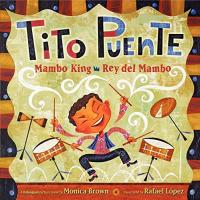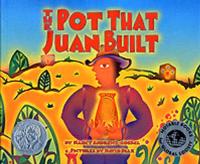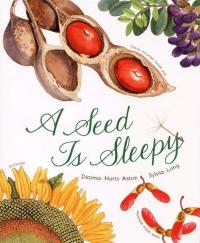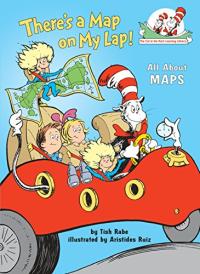
A mother humpback whale and her calf travel from the Caribbean Sea to the coast of New England and back over a year. Informative text is formatted to be read as a whole or in chunks and illustrated with luminous pastel illustrations. Additional information is included.
Here Come the Humpbacks!

Whenever an emergency happens, there are vehicles staffed by trained people to help. Photographs and brief information are presented for both familiar and unique vehicles and situations. Additional material includes access to a digital book.
Emergency Vehicles

Meet marine animals in lush photographs and informative, straightforward text. Count familiar and lesser known sea animals from 1 to 10 and learn more from factual back matter.
Ocean Counting

An old game is again fresh as each die-cut lets reader spy with their little eye a farm animal of a specific color that begins with a specific letter. A page turn reveals the entire animal and the sounds it makes.
I Spy on the Farm

Travel by air begins with one sign for the airport, all the way up to 33,000 feet in the air, ending with one happy meeting. Stylized illustrations and simple text me present what can be seen from start to finish.
Flight 1-2-3

Works by many artists uniquely depict people from many parts of the world. No words are needed to view varied portraits, in many styles from many places all of which are identified.
Faces for Baby

Count colorful butterflies in natural settings in this small, sturdy, attractively illustrated concept book. Each of the colorful ten butterflies is identified by name on the back cover.
Butterfly Colors and Counting

A bee sounds like “BUZZ’ in English, but “SURR’ in Swedish and “ZZZ’ in Italian. Many animals sounds from different countries (with a national flag) are presented in lighthearted illustrations and large typeface.
Animals Speak

Two girls explore the spring colors of blossoming trees. Bold block prints show entire trees and provide a close-up of the blossoms, ideal to help identify familiar and less familiar trees from the dogwood, American beech, and magnolia.
Spring Blossoms

There are many ways to picture a tree throughout the seasons. Sometimes a tree plays “a game of dress-up”, or serves as a “high-rise home sweet home.” Textured collage illustrations extend meaning of the simple, evocative text in a joy-filled celebration of trees.
Picture a Tree

They can be observed anywhere; in fact, “You don’t have to go anywhere fancy to watch birds!” The informative, informal and playful guide encourages close observation and identification as well as tips for recording and finding out more about these ubiquitous creatures.
Look Up! Bird-Watching in Your Own Backyard

Stunning, realistic illustrations of frogs and onomatopoeic language combine to present frogs and their songs from around the world. A brief warning about threats to frogs’ environments and additional information conclude this engaging book just right to read aloud.
Frog Song

Tito Puente was born to be a musician. He grew up to become the Mamba King to whose music people danced the mambo, rumba, and cha-cha. Rhythmic language — in English and Spanish — and animated illustrations briefly present Tito’s life and the impact of music throughout.
Tito Puente, Mambo King / Tito Puente, Rey del Mambo

Stripes are found in nature in a variety of flora and fauna in many habitats. From exotic to domestic, revel in observing stripes in carefully crafted illustrations and lyrical text. Additional information and a playful call to match animal with stripe ends this handsome volume.
Stripes of All Types

This ‘Let’s-Read-and-Find-Out Science’ follows garbage from the trash bin to various places (landfills, recycling centers, etc.). Common terms are explained and made accessible to children. This title would pair well with Kate & Jim McMullan’s I Stink! (HarperCollins), a book told from the truck’s perspective.
Where Does the Garbage Go?

A cumulative poem (in the cadence of “The House that Jack Built”) chronicles the work and life of Mexican potter, Juan Quezada. Words could center around the culture, the potting process, or art & artists.
The Pot that Juan Built

Terms and comparisons to describe numbers are presented in an engaging story from which word wall content could be developed and expanded.
How Much, How Many, How Far, How Heavy, How Long, How Tall Is 1000?

How many kinds of seeds to you see? Where are they found? This handsomely illustrated book of seeds provides a poetic look at the myriad types of seeds and plants to complement a classroom study.
A Seed Is Sleepy

Full color photographs chronicle the search for missing mountain gorillas. It is the gorillas that find the young Miza and restore him to his family.
Looking for Miza

Two boys meet and develop a friendship. Readers will gain meaning and be able to read expressively from the animated presentation (in typeface and color as well as placement) of simple words which are ideal to read aloud in tandem. (Children can describe not only plot but attributes - characteristics and characterization - of the 2 boys. A discussion of language and how we greet our friends as well could take this into a social skills direction.)
Grapes of Math

Brief text and clear illustration combine to present both information and experiments that will encourage “what if” and “what next” discussions that can comfortably and safely combine with activities appropriate for young children.
I See Myself

Arresting photographs of water in various states not only introduces water but also weather, solids and liquids, and more. The sophisticated text further encourages experimentation and observation, although is not necessary to use the entire book with younger children.
A Drop of Water: A Book of Science and Wonder

Clear, textured illustrations of animals and their special parts (e.g., tail, nose) focus readers on the special function of each. Not only is it likely to generate a description of the appendage but its function (what it does), and of the animal and its environment. Other books by Steve Jenkins, such as Biggest, Strongest, Fastest (opens in a new window), may also generate rich descriptive language.
What Do You Do with a Tail Like This?

The familiar Cat in the Hat is used to introduce newly independent readers to maps of all kinds.
